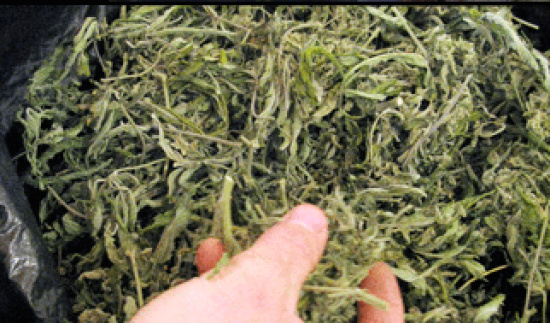“While those hippie outlaws are still around the Emerald Triangle, come harvest time you’re just as likely to see a new breed of grower around town, standing on the side of the road holding cardboard signs looking for work “clipping and bagging” marijuana plants,” writes Jesse Hyde in an article about the environmental impact of marijuana grows for the well respected Atlantic Magazine. He is seemingly unaware that the trimmers who stand alongside roads asking for jobs are not the growers. Trimmers, whether transients or locals, have little to do with the practices—-such as water depletion, grading inappropriately, and putting chemicals on the crops— that are concerning environmentalists about the burgeoning marijuana industry.
The article also warns that “Today, at least one third of the marijuana grown in the state is produced indoors, which accounts for nine percent of California’s annual electricity use.” But, Evan Mills study, the only one this reporter is aware of, says “In California, the top-producing state, indoor cultivation is responsible for about 3% of all electricity use or 8% of household use.” This is a relatively easy mistake to make but still painful. Californians do expend a lot of electricity on indoor grows but there is a difference between 8% of household use and 9% of all electricity consumed including industrial use.
The below photograph of “marijuanahumboldt,” may be the most unforgivable of all. That isn’t Humboldt marijuana anymore than an image of crushed grape skins is a picture of a fine Napa wine. It’s as if someone posted a picture of Angelina Jolie’s toenail clippings instead of her face. If only our local growers could sue for defamation and misrepresentation…

The article begins with a compelling tale from Scott Bauer, a local Dept. of Fish and Wildlife staff environmentalist. Bauer’s first encounter with the impact of marijuana grown insensitively on public land is told in heartbreaking detail—”Towering pines and Douglas firs, some over a century old, had been leveled, and a bulldozer had dumped several tons of sediment into a nearby creek, choking it off.”
The article ends with Bauer returning to the site of his first encounter to find “sacks of pesticides that hadn’t been there more than a few weeks. The growers were back, expanding their operation.” The story could have been compelling…but, the egregious mistakes took credibility from the entire piece.
CLICK TO MANAGE